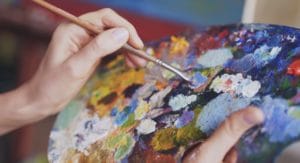
How Expressive Therapy Helps
Expressive therapy can play an integral role in recovery. It helps clients make important breakthroughs, build trusting relationships with therapists and other clients, and boosts self-confidence. Utilizing the creative right side of the brain enables clients to transform abstract feelings like fears, internal struggles and emotions into something more concrete that can be explored in therapy sessions. It is especially helpful for clients with internal conflicts who find it difficult to articulate their feelings in words.
Benefits of Expressive Therapy
Expressive therapy opens creative avenues of communication that can lead to greater meaning and clarity and enhance healing. Benefits include:
- Enhanced self-esteem
- Strengthened sense of self
- Enriched insight into life experiences
- Reduced stress and anxiety
- Improved self-expression
- Enhanced coping skills
- Greater empathy
- Improved concentration, focus and attention
